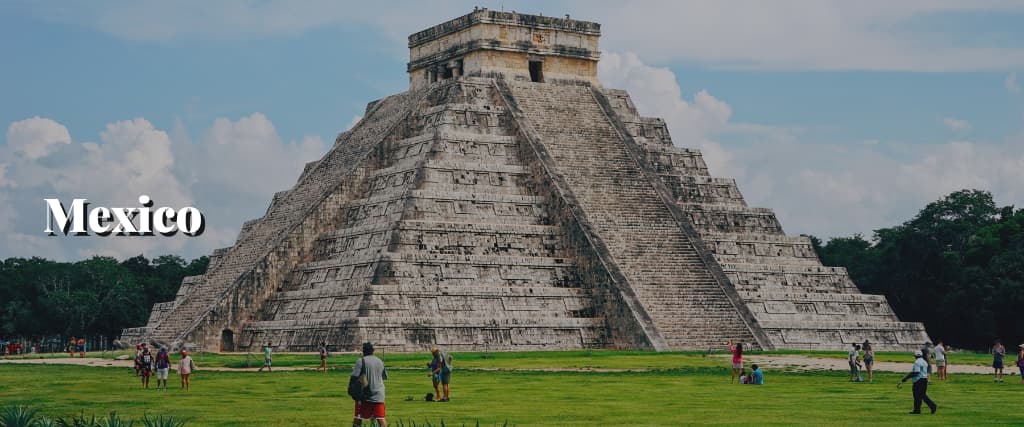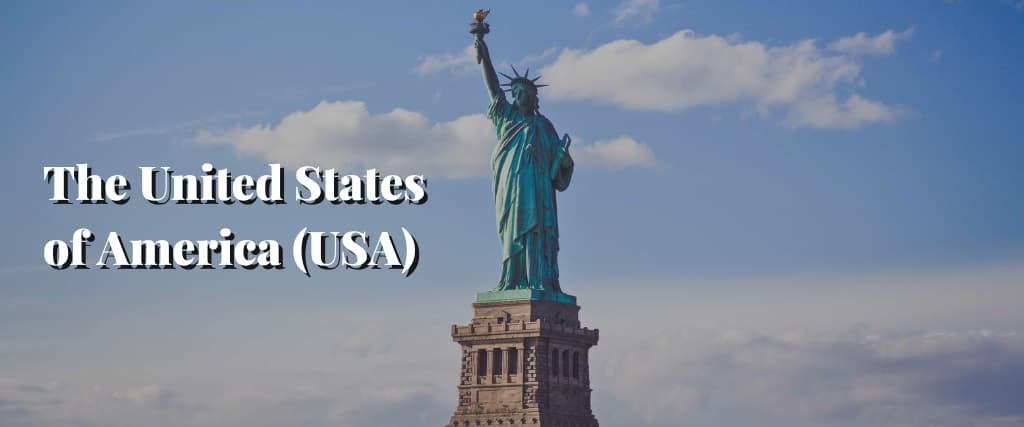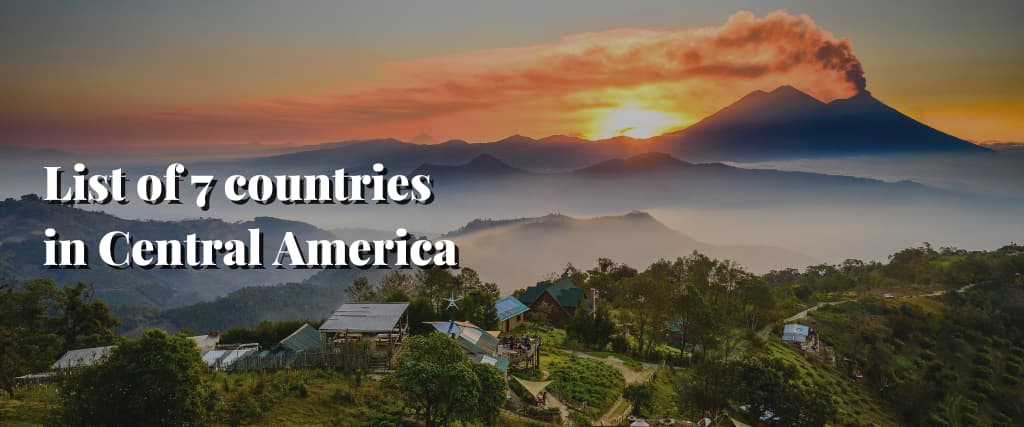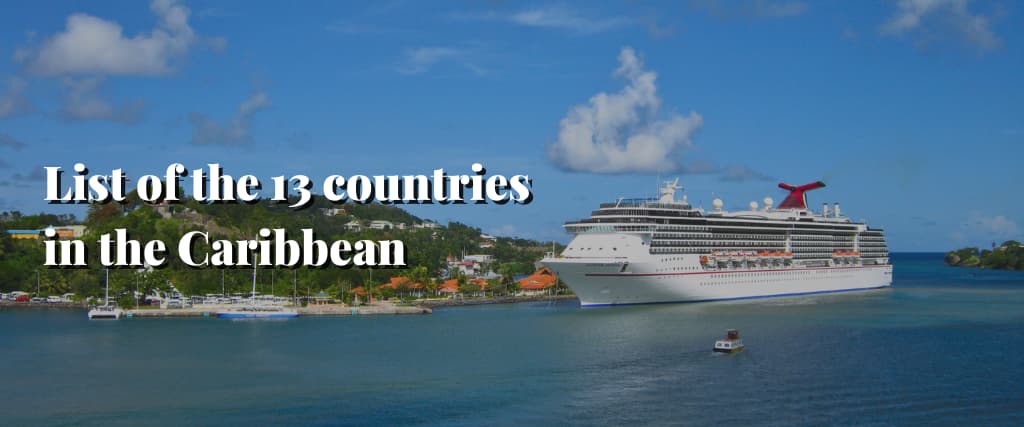When asked how many countries are in North America, most would likely say three: Canada, the United States, and Mexico. However, this answer is only partially accurate. North America is home to 23 nations, including the three major countries, Central American countries, and Caribbean islands/countries.
The classification of these nations can be complex, as some are foreign colonies rather than independent countries. This surprising information highlights the importance of expanding our knowledge and understanding of our world’s geography and political makeup.
In this article, we will explore the diverse range of countries that make up North America and why more than the answer of three is needed to capture the full scope of this dynamic region.
Countries in North America – The three big ones
Canada, Mexico, and the United States of America, are the three nations that make up the North American continent. With a combined area of almost 20 million square kilometres, or 8 million sq miles, and a population that makes up more than 84% of all residents of North and Central America, they are the most powerful nations in North America. Let’s now get into the specifics.

Canada
Canada is the largest state in North America and the second biggest country on earth, behind Russia, with a total area of under 10 million square kilometres, or over 3.7 million square miles.
Yet, despite having a population of almost 38 million, it ranks only as the 37th most populated nation in the world since so much of its northern topography (80%) is inhospitable. Canada’s two official languages are French and English, with Quebec being the majority French-speaking province.

Mexico
Mexico is the most populated Spanish-speaking nation in the world, with 130 million residents, or 22% of the population of North and Central America. Mexico’s east and west coasts are located on the Gulf of Mexico and the Pacific Ocean, respectively. It covers 761,600 square miles or a little under 2.5 million square kilometres.

The United States of America (USA)
More than half of all people living in North and Central America reside in the United States, between Canada and Mexico. More than 330 million people reside in the United States, which covers an area of more than 9 million square kilometres, or roughly 3.9 million square miles.
Despite the absence of an official language, 78% of Americans speak English, and a sizeable minority (about 13%) speak Spanish.
The countries in Central America are countries in North America!
Central America, a region where North and South America meet, is often perceived as a separate entity but a part of the North American continent. Despite being regarded as a distinct area or even a subcontinent, all seven nations within Central America are situated within North America.
This may confuse, but it is essential to understand that Central America is not a continent but a part of a giant landmass.

List of 7 countries in Central America
- Belize
- Guatemala
- El Salvador
- Honduras
- Nicaragua
- Costa Rica
- Panama
Central America, a region where North and South America meet, is often perceived as a separate entity, but in reality, it is a part of the North American continent. Despite being regarded as a distinct area or even a subcontinent, all seven nations within Central America are situated within North America.
This may confuse, but it is important to understand that Central America is not a continent but a part of a larger landmass.
The Nations of the Caribbean Are a Part of North America.
So what countries in the Caribbean are considered countries of North America?

List of the 13 countries in the Caribbean
- Antigua and Barbuda
- Bahamas
- Barbados
- Cuba
- Dominica
- Dominican Republic
- Grenada
- Haiti
- Saint Kitts and Nevis
- Jamaica
- Saint Lucia
- Saint Vincent and the Grenadines
- Trinidad and Tobago
The reason why Aruba, Puerto Rico, and the Cayman Islands are not considered part of the Caribbean or included in the list of North American nations is due to their status as protectorates of other countries.
Many islands in the Caribbean are still foreign possessions of European nations as a result of colonisation. The income generated by these islands through tourism could potentially supplement their respective national budgets.
While Central America has a distinct identity, it is located at the intersection of North and South America. The seven countries that make up Central America are geographically situated within the North American continent.
This can be a source of confusion, but it is important to note that all of its constituent nations are part of North America despite being considered a subcontinent.
List of the territories in the Caribbean
| Name | Capital | Currency | Official language(s) | Area (km2) |
| Antigua and Barbuda | St. John’s | Eastern Caribbean dollar | English | 440 |
| Aruba | Oranjestad | Aruban florin | Dutch, Papiamento | 180 |
| Bahamas | Nassau | Bahamian dollar | English | 13,940 |
| Barbados | Bridgetown | Barbadian dolla | English | 430 |
| Canada | Various | Canadian dollar | English | 2,767,890 |
| Cuba | Havana | Cuban peso, Cuban convertible peso | English | 109,884 |
| Cayman Islands | George Town | Cayman Islands dollar | English | 109,884 |
| Dominican Republic | Santo Domingo | Dominican peso | English | 264 |
| Dominica | Roseau | Eastern Caribbean dollar | English | 48,671 |
| Grenada | St. George’s | Eastern Caribbean dollar | English | 751 |
| Haiti | Port-au-Prince | Haitian gourde | English | 344 |
| Jamaica | Kingston | Jamaican dollar | English | 27065 |
| Montserrat | Plymouth | East Caribbean dollar | English | 10,991 |
| Puerto Rico | San Juan | United States dollar | English | 102 |
| Puerto Rico | Paramaribo | Surinamese dollar | English | 9,104 |
| Suriname | Cockburn Town | Surinamese dollar | English | 163,820 |
| Turks and Caicos Islands | Cockburn Town | United States dollar | English | 948 |
| Saint Vincent and the Grenadines | Kingstown | Eastern Caribbean dollar | English | 389 |
| Trinidad and Tobago | Port of Spain | Trinidad and Tobago dollar | English | 5,131 |
What are the languages spoken in North America?
Due to the effects of colonialism, English and Spanish are widely spoken throughout North America. Despite this, the continent has evolved into a melting pot since people worldwide have lived there over time. We created a list of the top ten languages spoken in North America, which differs considerably from those spoken worldwide.
It is challenging to obtain precise data on language usage since not all nations include textual data in their censuses. The data for these figures, including native speakers and non-native speakers of every language, comes from Ethnologue. As they were on the globe initially, we additionally provided a list of the indigenous languages most often spoken in North America at the conclusion.
1. English
The most widely spoken language in North America is English, with a population of over 334 million speakers. As one might anticipate, the majority of English speakers—297 million—live in the United States, followed by Canada, Mexico, and a scattering of speakers in the nations of Central America and the Caribbean islands.
2. Spanish
Therefore, it should not come as much of a surprise that Spanish is the second most spoken language in North America. More Spanish speakers reside in Mexico than in Spain, with about 125 million native speakers. After Cuba, the Dominican Republic, the remainder of Central America, and a few Caribbean islands, the United States has the second-highest percentage of Spanish-speaking citizens.
3. French
The third most common language is French; however, it has a far smaller population of speakers than Spanish. In North America, Haiti and Canada are home to most French-speaking people. More than 2 million francophones reside in the United States.
4. Chinese
Chinese, a large macrolanguage umbrella covering Mandarin, Yue, Hakka, Wu, Min Dong, and other variations, comes in fourth place. Chinese speakers in North America are primarily concentrated in the United States, while there are also significant populations in Canada.

5. Tagalog
There are more than 2 million Tagalog speakers in North America, and it is widely used in the Philippines as the fifth most spoken language. Of these speakers, 1.6 million reside in the United States, making it one of the most commonly spoken languages. Additionally, there are approximately 431,000 Tagalog speakers in Canada.
6. Vietnamese
A few hundred thousand speakers only separate the remaining languages on this list; thus (if they haven’t already), they might easily swap places soon. Vietnamese, which around 1.5 million people speak in North America, comes in sixth. Just about 1.4 million of them reside in the United States, and the majority of the remainder do so in Canada (156,000).

7. German
German comes in second with 1.3 million native speakers in North America. They number a little over a million and are all Americans. The last German speakers in North America reside in Canada (384,000).

8. Arabic
Arabic has 1.3 million speakers in North America and is ranked eighth. This language makes the distribution between the US and Canada more equal. 924,000 Arabic speakers reside in the United States, while 420,000 are Canadian citizens.

9. Korean
With around 1.2 million speakers, Korean is North America’s tenth most widely spoken language. One million of these speakers are from the United States, while the remainder of Canadian Korean speakers is from North America (153,000).

10. Italian
Italian is last but by no means least. There are around a million Italian speakers in North America, with 709,000 living in the United States and 376,000 in Canada. New York and New Jersey are the states in the US with the greatest concentration of native Italian speakers.

Here is a list of all 23 countries in North America in alphabetical order
- Antigua and Barbuda
- Bahamas
- Barbados
- Belize
- Canada
- Costa Rica
- Cuba
- Dominica
- Dominican Republic
- El Salvador
- Grenada
- Guatemala
- Haiti
- Honduras
- Jamaica
- Mexico
- Nicaragua
- Panama
- Saint Kitts and Nevis
- Saint Lucia
- Saint Vincent and the Grenadines
- Trinidad and Tobago
- United States
Conclusion
That concludes the ultimate explanation of the question, “How many countries are in North America?” However, if you’re curious about the total number of countries in the world, or if you want to learn about the smallest countries in Europe, or even if you’re going to avoid confusing Slovakia and Slovenia in the future, you might find this helpful blog post to be of interest.
